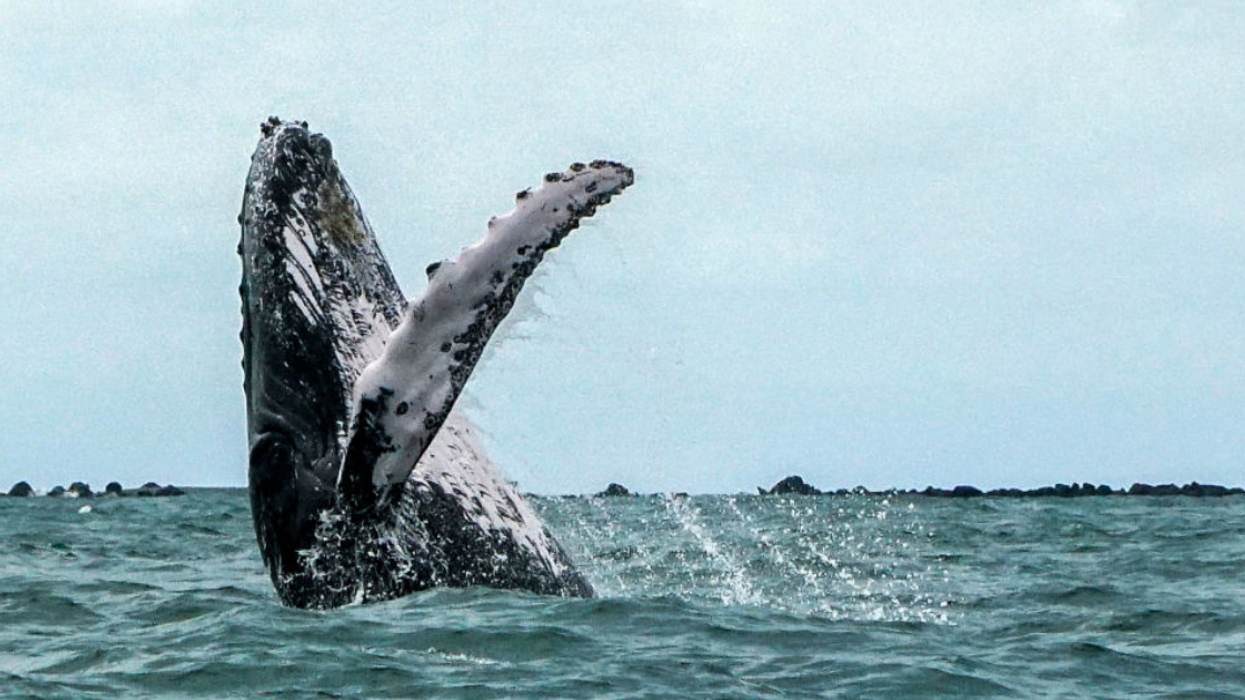Of all the places you'd expect to see a humpback whale, it wouldn't be the Amazon jungle.
But that's what's happened.
Researchers are understandably perplexed after the whale, believed to be a calf, was found on Friday on the Brazilian island of Marajo.
It was found about 50 feet from the ocean shore.
In a Facebook post, The Bicho D'água Institute explained that the whale was "not an adult animal [and] not as big as it looks in the images."
"We're still not sure how it landed here, but we're guessing that the creature was floating close to the shore and the tide, which has been pretty considerable over the past few days, picked it up and threw it inland, into the mangrove," marine specialist Renata Emin told Brazilian news site O Liberal.
She added that humpback whales typically migrate south to Antarctica during this time of year:
"Along with this astonishing feat, we are baffled as to what a humpback whale is doing on the north coast of Brazil during February because this is a very unusual occurrence.
We believe this is a calf which may have been traveling with its mother and probably got lost or separated during the migratory cycle between the two continents."
Emin's far from the only one that's confused:
An autopsy to determine how the whale died is expected to take about 10 days. According to Dirlene Silva, a spokesperson from SEMMA. researchers discovered the whale after they noticed the carcass caught the attention of vultures and other scavengers.
She noted that there will be no attempts to remove the whale.
"It's very difficult to get there and there's no way we can send a bulldozer because it would not get through," she told The Independent. "There is no way to remove it. To get there, we need to cross the swamp."
Rest in peace, little one. What other odd stories will 2019 bring us?








 @DonaldJTrumpJr/X
@DonaldJTrumpJr/X





 @bitsyqvc/Instagram
@bitsyqvc/Instagram @emilyrosechadwick/Instagram
@emilyrosechadwick/Instagram @vanessamarigold/Instagram
@vanessamarigold/Instagram @miraclegro/Instagram
@miraclegro/Instagram @dep_87/Instagram
@dep_87/Instagram @the_modern_mortician/Instagram
@the_modern_mortician/Instagram @adamgriffinphoto/Instagram
@adamgriffinphoto/Instagram @celineoracle/Instagram
@celineoracle/Instagram @freshbeautystudio/Instagram
@freshbeautystudio/Instagram @sus.anstimpson/Instagram
@sus.anstimpson/Instagram @megan_duffy1/Instagram
@megan_duffy1/Instagram @recomposelife/Instagram
@recomposelife/Instagram
 @ImBreckWorsham/X
@ImBreckWorsham/X @pumphouse7873/X
@pumphouse7873/X
 Ash Stanton/Facebook
Ash Stanton/Facebook Laura Sprinkle/Facebook
Laura Sprinkle/Facebook Akira Karasu/Facebook
Akira Karasu/Facebook Cevanna Gilbert/Facebook
Cevanna Gilbert/Facebook Troy Adam/Facebook
Troy Adam/Facebook